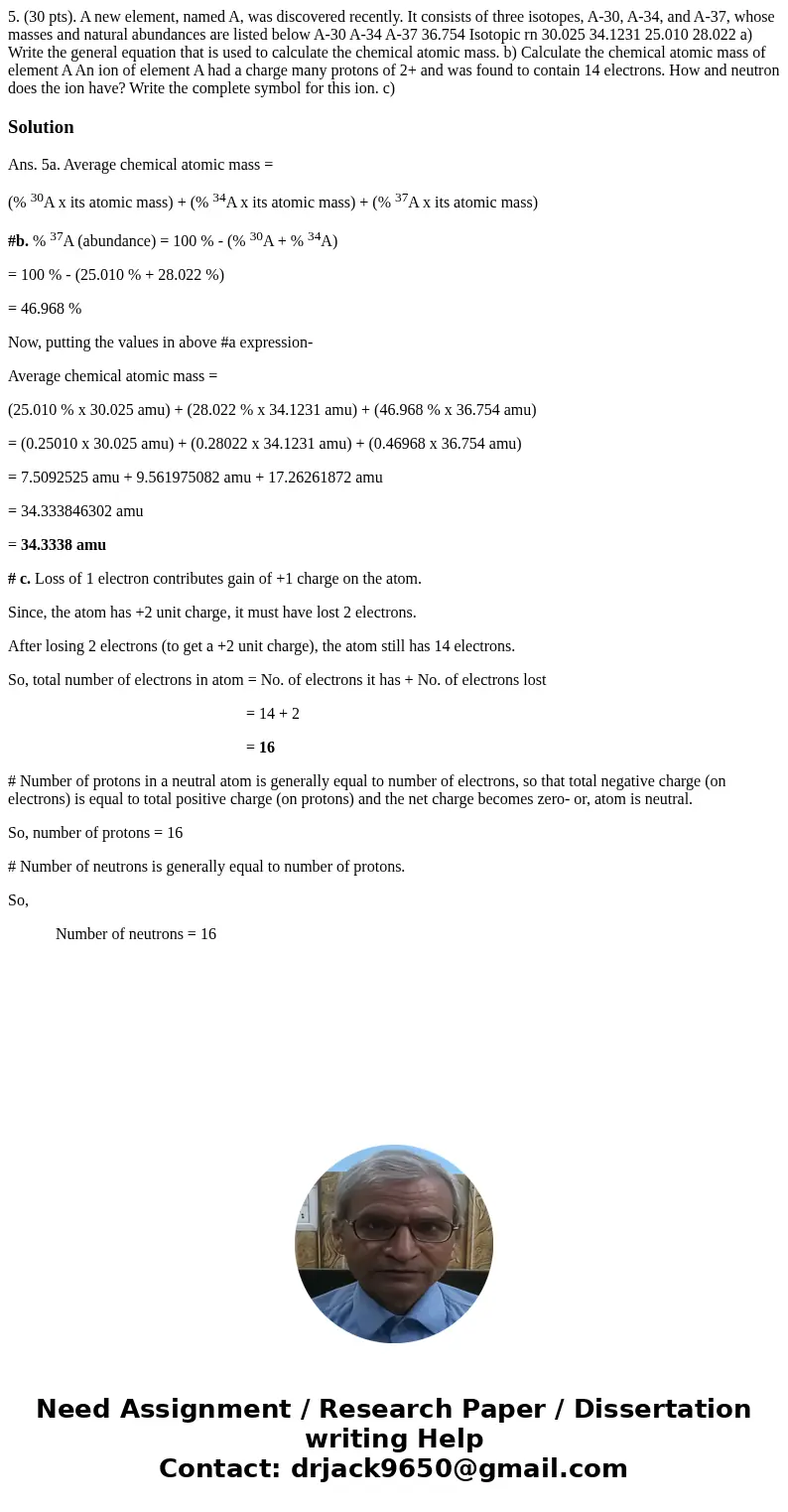5 30 pts A new element named A was discovered recently It co
Solution
Ans. 5a. Average chemical atomic mass =
(% 30A x its atomic mass) + (% 34A x its atomic mass) + (% 37A x its atomic mass)
#b. % 37A (abundance) = 100 % - (% 30A + % 34A)
= 100 % - (25.010 % + 28.022 %)
= 46.968 %
Now, putting the values in above #a expression-
Average chemical atomic mass =
(25.010 % x 30.025 amu) + (28.022 % x 34.1231 amu) + (46.968 % x 36.754 amu)
= (0.25010 x 30.025 amu) + (0.28022 x 34.1231 amu) + (0.46968 x 36.754 amu)
= 7.5092525 amu + 9.561975082 amu + 17.26261872 amu
= 34.333846302 amu
= 34.3338 amu
# c. Loss of 1 electron contributes gain of +1 charge on the atom.
Since, the atom has +2 unit charge, it must have lost 2 electrons.
After losing 2 electrons (to get a +2 unit charge), the atom still has 14 electrons.
So, total number of electrons in atom = No. of electrons it has + No. of electrons lost
= 14 + 2
= 16
# Number of protons in a neutral atom is generally equal to number of electrons, so that total negative charge (on electrons) is equal to total positive charge (on protons) and the net charge becomes zero- or, atom is neutral.
So, number of protons = 16
# Number of neutrons is generally equal to number of protons.
So,
Number of neutrons = 16

 Homework Sourse
Homework Sourse